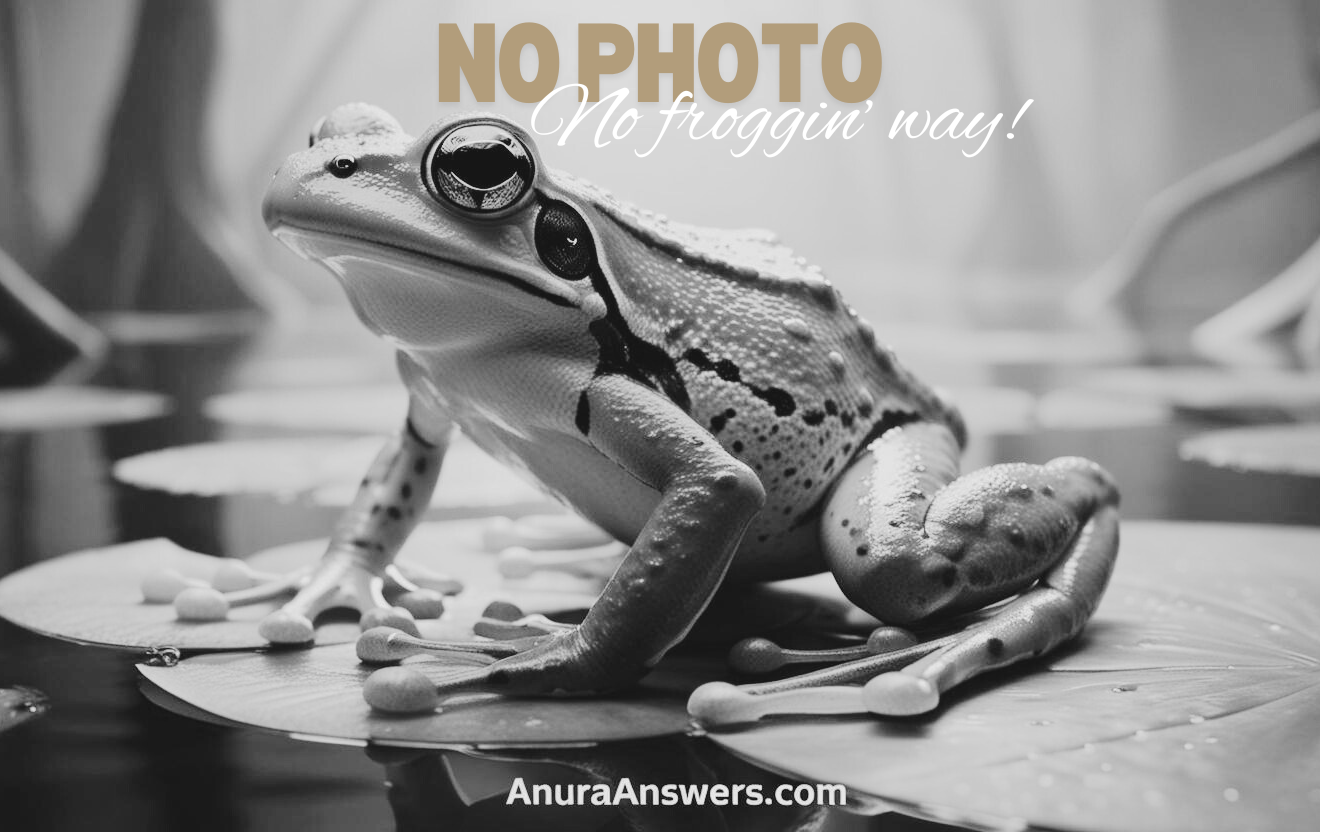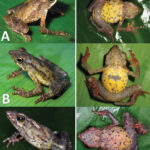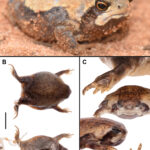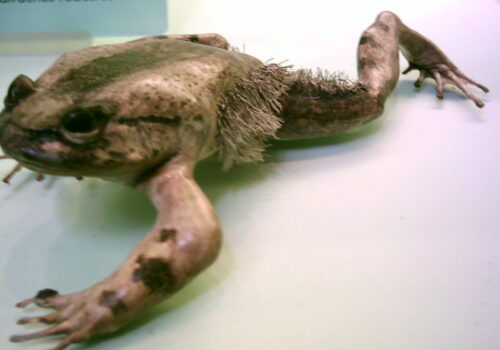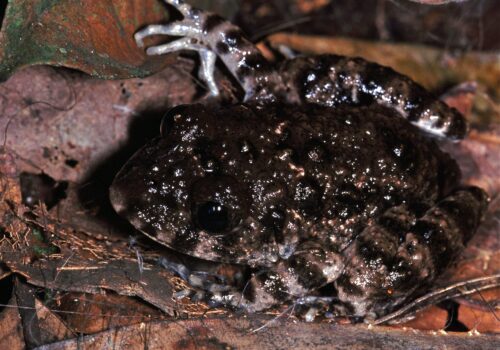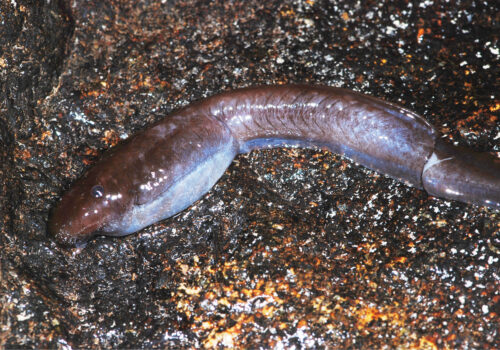- Mannophryne orellana: The Hidden Jewel of Venezuela's Forest Streams
- Taxonomy and Classification
- Natural Habitat: Streams and Verdant Forests
- Physical Characteristics: Subtlety in Appearance, Adaptations for Survival
- Behavior and Life Cycle: Intricacies of Amphibian Parenthood
- Ecological Role: Keystone in a Delicate Web
- Threats and Conservation Status: Safeguarding an Invisible Wonder
- Cultural and Scientific Significance: Emblems of Biodiversity
- Conclusion: Protecting a Silent Ambassador of Conservation
Mannophryne orellana: The Hidden Jewel of Venezuela’s Forest Streams#
Amidst the lush foliage and crystal-clear streams of Venezuela’s rich forests, there lives an amphibian whose subtle beauty and delicate song have intrigued researchers and nature enthusiasts alike. The Mannophryne orellana, a small yet strikingly fascinating frog, embodies the rich biodiversity hidden within one of the planet’s most compelling ecosystems. Commonly overshadowed by larger, flashier amphibians, this diminutive dart frog captivates those willing to peer closer, offering profound insight into the interconnected webs of rainforest life.
Named scientifically as Mannophryne orellana, this species belongs to the Aromobatidae family, known widely for their intricate reproductive behaviors and terrestrial adaptations. Though seldom visible at first glance, these vibrant frogs play a pivotal role as ecological indicators, reflecting the state of their environment with an eloquent precision enjoyed by experienced biologists and naturalists alike.
Taxonomy and Classification#
To fully appreciate the role Mannophryne orellana plays in its habitat, understanding its taxonomy is essential. Within amphibian biodiversity, Aromobatidae—a family of frogs colloquially termed “rocket frogs”—stands out for their active, agile habits and subtle coloration. Mannophryne, the genus within this family, is defined by a group of relatively small frogs characterized by their precise ecological niches and remarkable behavioral adaptations.
First described scientifically in 1999 by herpetologists Barrio-Amorós, Santos, and Molina, Mannophryne orellana quickly gained prominence as an important species for ecological studies. Its closest relatives include other Venezuelan Mannophryne species such as Mannophryne herminae and Mannophryne trujillensis, which share similar behavioral traits but reside in separate mountainous regions, each isolated in their own lush microhabitats.
Natural Habitat: Streams and Verdant Forests#
The rich tapestry of life within Venezuela’s rainforests provides the perfect refuge for Mannophryne orellana. Specifically endemic to the Venezuelan state of Bolívar, this small frog primarily inhabits moist, shaded forest ecosystems adjacent to clear, cool montane streams—often nestled within dense tree canopies. It thrives at elevations ranging typically from 500 to 1,500 meters above sea level, a region boasting year-round humidity and consistent precipitation.
Within these pristine forests, Mannophryne orellana selects microhabitats meticulously. It prefers gentle slopes blanketed by a mosaic of roots, fallen leaves, rotting logs, and dense mossy patches capable of retaining moisture throughout even drier spells. Here, amidst the gentle murmur of flowing streams, the subtle chirps and trills of Mannophryne orellana’s song create a serene acoustic landscape, blending seamlessly with their surroundings to remain discreet from potential predators.
Ecological Niche and Habitat Interaction#
Adjusting closely to its choice microhabitat, Mannophryne orellana employs a behavior directly influenced by the conditions of the forest streams. These frogs do not stray far from water sources, relying on them to complete their reproductive cycle. Their presence within a given area often serves as a reliable indicator of the overall health and stability of their ecosystem. Moreover, their selectivity in habitats highlights their sensitivity to variations in temperature, humidity, and water quality, emphasizing the fragile interconnectedness of the forest ecosystem they call home.
Physical Characteristics: Subtlety in Appearance, Adaptations for Survival#
At first glance, the Mannophryne orellana, with an overall adult length usually no larger than 25 millimeters, may appear modest and unassuming. Their skin, though smooth, offers subtle variations with a rich palette of olive, brown, or dark gray hues, punctuated occasionally by lighter undertones. A dark, pronounced stripe usually runs from their nostrils, past the eyes, and down their sides, providing an effective camouflage on the forest floor.
The slight dorsal coloration not only conceals the frog from predators but also contributes significantly to their survival as they forage quietly amidst the leaf litter. Their robust hind legs contrast with their smaller size, adapted for quick, powerful leaps necessary for evading dangers or capturing elusive prey.
Adaptations for Terrestrial Life#
Unlike other brightly colored poison dart frogs, Mannophryne orellana lacks vivid aposematic coloration advertising toxins. Instead, it represents an evolved strategy that favors stealth and camouflage over conspicuousness. This adaptation helps it escape predators unnoticed rather than relying on powerful toxins typical of other dart-frog relatives, underscoring the rich evolutionary diversity even within closely related groups.
Furthermore, their agile limbs and well-developed digits aid adept climbing along sloped surfaces or slippery rocks near streams, showcasing evolution finely tuned for life in a constant moisture-rich environment.
Behavior and Life Cycle: Intricacies of Amphibian Parenthood#
Observing Mannophryne orellana in the wild offers a unique foray into amphibian parenting. Like other members of its genus, this species features sophisticated reproductive behaviors. Breeding commences with the onset of seasonal rains, when swelling streams and increased humidity provide ideal conditions for egg laying and tadpole development.
Males produce delicate yet distinctive calls from secluded perches—hidden within leaf litter or beneath shadowy roots—to attract females and deter rival suitors. After careful mate selection, the female lays a clutch of eggs amidst damp leaf-litter pockets or rocky crevices, strategically choosing locations safe from predators and desiccation.
Tadpole Transportation: Remarkable Parental Investment#
Perhaps the most striking aspect of Mannophryne orellana’s life cycle is the uniquely attentive parental care. After eggs hatch, a captivating behavior emerges: males take responsibility for tadpole survival by carefully transporting offspring on their backs—one of the distinct hallmarks of several Aromobatidae frogs. Through intricate maneuvers, the male frog carries each tadpole individually, depositing them in small forest pools or slow-moving tributaries ideal for further development.
This extraordinary parental dedication ensures offspring survival in a competitive, predator-rich forest environment. Observant naturalists and biologists studying Mannophryne orellana often marvel at the determination demonstrated by such tiny creatures in securing their legacy within this complex ecosystem.
Ecological Role: Keystone in a Delicate Web#
Mannophryne orellana, though diminutive, plays an outsized role within its ecosystem. As insectivores consuming ants, termites, flies, and other invertebrates, these frogs help control insect populations and thus maintain equilibrium within their forest habitat. Conversely, they serve as prey for larger animals, including birds, snakes, and invertebrates, seamlessly intertwining within the food web.
More broadly, their presence and population density offer rich data for ecologists assessing environmental health and changes. As amphibians are sensitive to shifts in climate, pollution, and habitat stability, diminished numbers of Mannophryne orellana could signal environmental stress, prompting actions preventing broader ecosystem damage.
Threats and Conservation Status: Safeguarding an Invisible Wonder#
Despite their ecological significance, Mannophryne orellana faces threats primarily induced by human activities. Habitat destruction from logging, mining, agricultural expansion, and infrastructure projects constitutes the primary threat. These disruptions damage essential creek habitats and fragment the species’ already restricted range, placing considerable stress upon their populations and reproductive cycles.
While currently categorized by the IUCN as “Data Deficient,” the lack of thorough research suggests a critical need for focused conservation actions, habitat preservation efforts, and additional field studies. The subtle yet profound importance of this species underscores the urgency of protecting vulnerable amphibian habitats—a critical step towards the broader preservation of biodiversity.
Cultural and Scientific Significance: Emblems of Biodiversity#
Although Mannophryne orellana may not yet feature prominently in local folklore or cultural symbolism, its scientific intrigue lies precisely in its subtlety. Biologists frequently use this amphibian and its relatives as model species for studying complex ecological dynamics, reproductive strategies, and habitat sensitivity.
Conclusion: Protecting a Silent Ambassador of Conservation#
Mannophryne orellana, a distinctly fascinating inhabitant of Venezuela’s verdant forests, represents so much more than its quiet demeanor suggests. Addressing the conservation needs of this frog addresses the health and survival of an entire ecosystem. Its silent yet vibrant existence calls upon scientists, conservationists, and nature enthusiasts alike to protect fragile habitats. By safeguarding Mannophryne orellana, we protect an irreplaceable pawn in the intricate chessboard of life.
